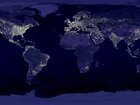A stark theme emerged from an annual scientific get-together in Vancouver: the world must be helped to believe in science again or it could be too late to save our planet.
Science is "under siege," top academics and educators were warned repeatedly at the American Association for the Advancement of Science meeting as they were urged to better communicate their work to the public.
 Full Story
Full Story
Edinburgh Zoo on Monday started daily tests to pinpoint the best time for its pair of giant pandas, given to Scotland by China, to try to produce a cub.
Zoo-keepers are collecting urine and vaginal samples from female panda Tian Tian, whose name means Sweetie, to check her estrogen levels.
 Full Story
Full Story
China's National Energy Administration plans to beef up safety at nuclear power plants after months of assessments and inspections in the wake of Japan's Fukushima disaster.
The administration said in a statement on its website that 13 research and development projects involving the China National Nuclear Corp. and other state-run companies and research institutions should be completed by 2013.
 Full Story
Full Story
Scientists say preliminary tests indicate radiation didn't cause lesions and other symptoms associated with sickened or dead ringed seals found along Alaska's northern coast last year.
The National Oceanic and Atmospheric Administration says a screening of tissue samples from both healthy and sick ice seals and walruses showed no radiation levels that would have directly caused the symptoms.
 Full Story
Full Story
Turbo-charging photosynthesis -- by which plants and bacteria turn sunlight into food and energy -- in an "artificial leaf" could yield a vast commercial power source, scientists said.
Photosynthesis is “unfortunately not very efficient," Anne Jones, assistant professor and biochemist at Arizona State University, told the American Association for the Advancement of Science meeting in Vancouver this weekend.
 Full Story
Full Story
An orphaned South African rhinoceros blinded by poachers who hit it on the head in the same attack that killed its mother has regained its vision after cataract surgery, its owners said Monday.
Roccy the rhino underwent the surgery on January 3 in the University of Pretoria's veterinary hospital and has now returned to his native Elandela game reserve in the country's northeast.
 Full Story
Full Story
The world's first "test-tube" meat, a hamburger made from a cow's stem cells, will be produced this fall, Dutch scientist Mark Post told a major science conference on Sunday.
Post's aim is to invent an efficient way to produce skeletal muscle tissue in a laboratory that exactly mimics meat, and eventually replace the entire meat-animal industry.
 Full Story
Full Story
Babies who are raised in homes where two or more languages are spoken may appear to talk later than those learning just one language, leaving parents puzzled and concerned as to the reasons why.
Conventional wisdom often suggests that such children are confused and so they take longer to talk. Or, parents may hear that any apparent delay is just an illusion because kids are little geniuses who can learn many languages quickly and easily.
 Full Story
Full Story
Babies still too small to speak know how to make jokes and form friendships, say researchers at an Australian university who have spent two years filming the behavior of young children.
Academics at Charles Sturt University are studying how children interact with other infants while in childcare using footage obtained from tiny cameras strapped to their heads.
 Full Story
Full Story
Bird flu experts meeting in Geneva on Friday ruled that controversial research on a mutant form of the virus potentially capable of being spread among humans should be made public.
Security assessments must however be carried out first before the two studies can be published and the research can continue, scientists agreed at a two-day meeting at the World Health Organization.
 Full Story
Full Story



